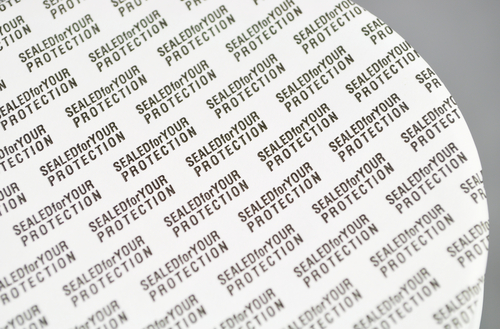What do pharmaceutical, food, electronic and designer apparel products have in common? All are at risk for tampering, counterfeiting, spoilage, theft and other brand-killing catastrophes. Security packaging is a fast-growing specialty field that addresses these risks for a wide range of industries and their consumers.
Security packaging is most recognized for its pharmaceutical and OTC drug applications, beginning with the 1982 Tylenol scare that exposed a critical need to protect consumers from malicious tampering. Within a month of the first Tylenol-related death, security packaging was implemented as a first line of defense. Tylenol was reintroduced with a new, triple-sealed package – the first OTC pharmaceutical product to use tamper-resistant packaging. In the decades since, demand for security packaging has expanded significantly.
Packaging is created with safeguards for a variety of reasons and in numerous ways. In the case of Tylenol, the package was redesigned so that tampering would be virtually impossible without leaving obvious evidence. In other situations, the purpose and method may be entirely different.
Sometimes special films and coatings are used to protect products and their users from a multitude of threats. These may be created as covert or overt structures, and the most secure packaging uses both — similar to what is used on American currency — to guarantee and test a product’s authenticity.
Overt and covert security techniques are becoming more sophisticated. Overt techniques add something visible to the package, such as a lot code or tamper-evident label. Covert techniques require a scanner or other device for detection. For example, some packages are marked with invisible, ultraviolet-luminescent ink for security purposes. Specialty films and coatings can be used in constructing both types of security solutions.
Carestream Contract Manufacturing is able to manufacture very thin multi-layer coated structures with precise thickness uniformity, and with different additives, colors, refractive indices and other features that can form features to enhance the security of a package. These layers can be combined with other functional coatings, such as inkjet receptors or barrier coatings, often in the same coating “pass,” which allows for excellent economics.
For example, Carestream has manufactured a coating structure with one layer an exact quarter-wavelength of green light, which is mid-spectrum for visible light. This is used to make incoming light reflect off of both the top surface of the coating and the bottom of the coating, causing a half-wave reflection out of phase from each surface. This reduces reflection well, and is used in optical applications such as face shields. Combined with a specific refractive index, an additive, or another trick to shift reflective properties, this accurate coating can be used in security markings very difficult to duplicate. Such coatings are difficult to achieve in practice across a wide web and for thousands of feet, but all extremely simple at Carestream.
Common security packaging methods include:
- Selective release films and surface destruct films. Labeling with selective release films can be used to show evidence of tampering when an attempt is made to remove the label from the substrate. Visual indication that a package has been opened alerts consumers so they don’t end up taking contaminated food, health and beauty or other products home. Security labels can be coated with a printable top layer for multiple layers of functionality and laminated all in one coating pass.
- Sub-surface destruct security labels. A special coating layer can be applied to a substrate so that attempted label removal will leave evidence of tampering.
- Security labels. These can include:
- Holographic labels, which are optically variable and usually made on a polyester film base. Holographic labels can provide both brand authentication and tamper evidence.
- Optically variable devices (OVDs), which are generally constructed from a transparent film that serves as the image carrier, plus a reflective backing layer.
- Barrier films. When it comes to preventing spoilage or degradation of the primary package, barrier films can be combined with security coated structures. As discussed in our previous article, “Creating High-Quality, Multi-Layer Moisture Barrier Coatings Efficiently,” barrier films are commonly used to protect packaged foods, pharmaceuticals and electronics from moisture, gasses and light. Barrier performance (impermeability) is often accomplished with multiple layers such as polymer-based barrier solutions and alternating layers of other types of thin films, such as organic/inorganic, inorganic/inorganic and nanoparticle/inorganic layers. Any of these can also incorporate security features, leading to an enhanced product with very little additional cost other than the design work.
Protection of consumers, products and brands is becoming more and more essential as supply chains handle greater volumes and distances, and culprits grow more sophisticated. Addressing as many of the risks as possible with specialty packaging solutions is an important starting point. A company with a product application requiring multi-layer security packaging (3-20 coated layers, the latter our maximum in one “machine pass”) can save significant time and money by utilizing Carestream’s assets and expertise to create and coat multiple layers all at once.
